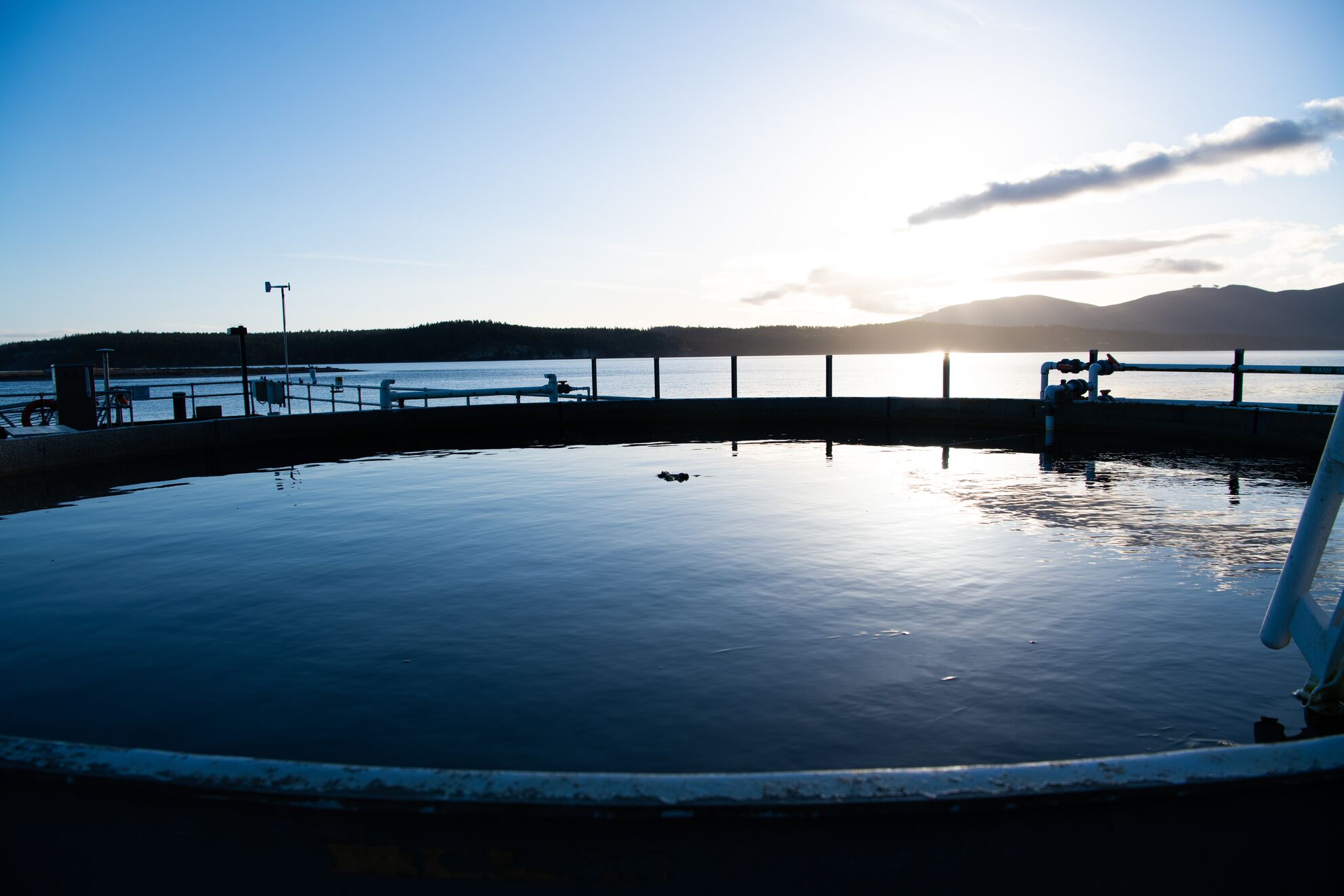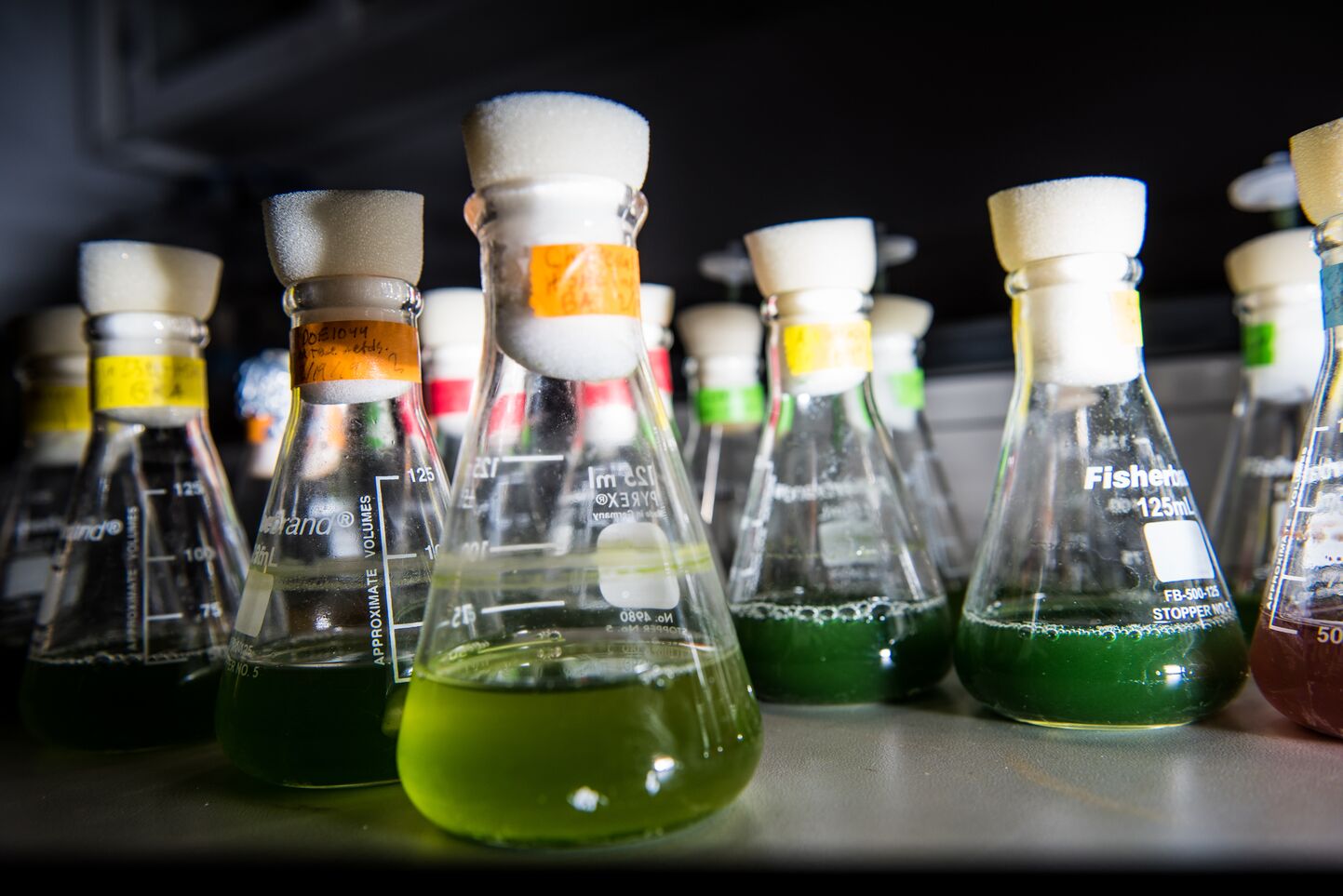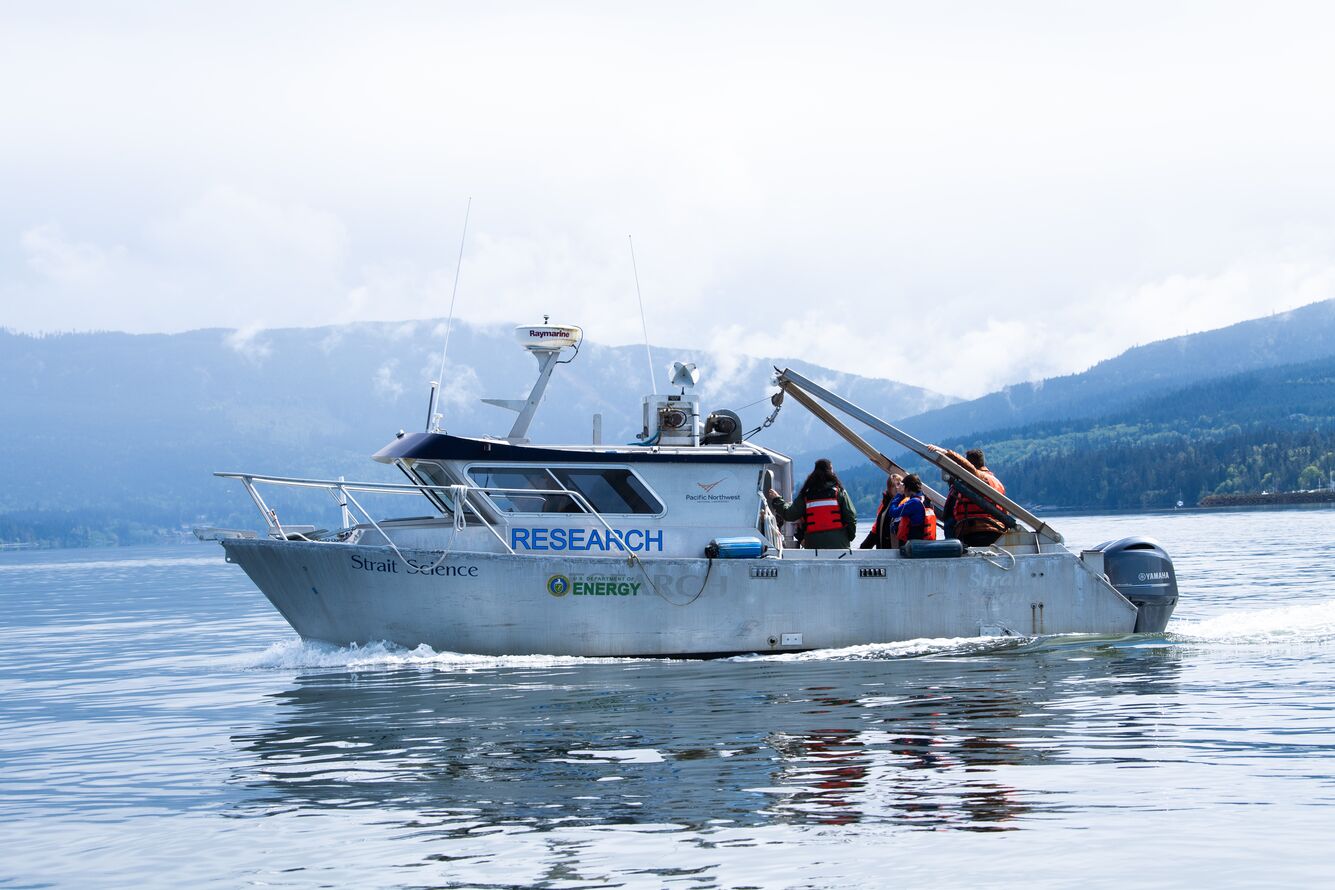PNNL Capabilities

PNNL-Sequim is uniquely suited as a testbed for mCDR technologies and interdisciplinary research, offering access to specialized research facilities and expert marine scientists in many fields.
Located on Sequim Bay in Washington State, the campus is home to laboratory facilities equipped with natural seawater, indoor and outdoor mesocosm tanks, research vessels and autonomous vehicles, and environmental and water monitoring. In addition to the laboratory facilities and in-water testing available in Sequim Bay, the scientists and scientific dive team at PNNL-Sequim bring a wealth of experience and expertise to the table in support of marine research and technology development critical for mCDR.
mCDR Capabilities at PNNL:
Aquatic Research Laboratories: The 5,300 square feet of laboratory space provides freshwater and raw or filtered seawater to simulate static or flow-through research conditions. This includes various sizes of low- and high-flow indoor and outdoor mesocosm tanks and flow-through chambers (0.5–1,800 L), as well as support instrumentation and equipment for standard measurements.

Integrated Sensors and Monitoring: PNNL-Sequim uses a fleet of sensors to monitor ocean and climate conditions, including standard water quality sensors located on the dock and mesocosm tanks, as well as deployable sensors for use in the field and on the autonomous surface vehicle. Additionally, the dock has a meteorological station with a comprehensive suite of water quality sensors that collect data at regular intervals.
On-Site Seawater Intake and Wastewater Treatment: Raw and filtered high‑salinity seawater from nearby Sequim Bay is available for use in the laboratory facilities and open-air mesocosm tanks.
Trace Element and Chemical Speciation Laboratories: These accredited analytical testing laboratories house state-of-the-art equipment to measure nutrients, trace metals, and carbon species in discrete seawater samples, including pH, alkalinity, dissolved inorganic carbon, and carbon dioxide partial pressure which are used to verify autonomous mCDR field sensors.
Computational Modeling and Simulations: PNNL-Sequim has a suite of robust, high-resolution computational models of regional ocean hydrodynamics, biogeochemistry, and marine life interactions to assist in the planning, testing, and evaluation stages of research and development.

Life Cycle Assessments and Techno-Economic Analyses: PNNL has extensive expertise and a dedicated team for conducting life cycle assessments and techno-economic analyses that can assess the effectiveness and impacts of new mCDR technologies and solutions.
Algal Growth and Optimization Laboratory: This laboratory has state-of-the equipment and capabilities to culture, grow, harvest, and characterize diverse micro- and macroalgae, including mesoscale ponds and reactors that can be used to measure carbon uptake under different conditions.
Research Vessels and Autonomous Surface Vehicle: Multiple research vessels are available to assist with sample collection, equipment deployment, and environmental monitoring for testing and research. In 2024, a hybrid research vessel, RV Resilience, will be joining the Department of Energy fleet and housed at PNNL-Sequim. An autonomous surface vehicle is also available to test sensor integration, deployment, and operation.
Scientific Dive Team: Trained scientific divers who can support the installation, monitoring, and recovery of instruments and equipment tested in Sequim Bay.

Electronics Laboratory: This laboratory is used to develop and troubleshoot new data and sensing systems, platforms, and field operations.
Arctic Research Laboratory: This 320 square foot freezer laboratory maintains air temperatures of 0°C to -15°C, and contains an 1,100 L raceway equipped with a paddlewheel and a recirculating pump system to generate turbulence. This is essential for testing new sensors in harsh conditions.
Hyperbaric Laboratory: Reactor vessels in this laboratory can replicate underwater ocean conditions as deep as 2 km below the water surface. This is essential for testing new sensors that can be used deep below the ocean surface.
Molecular Biology Laboratory: This 800 square foot laboratory houses incubators, confocal and fluorescent microscopes, thermocyclers, -80°C freezers, and a qPCR instrument for biological analyses.